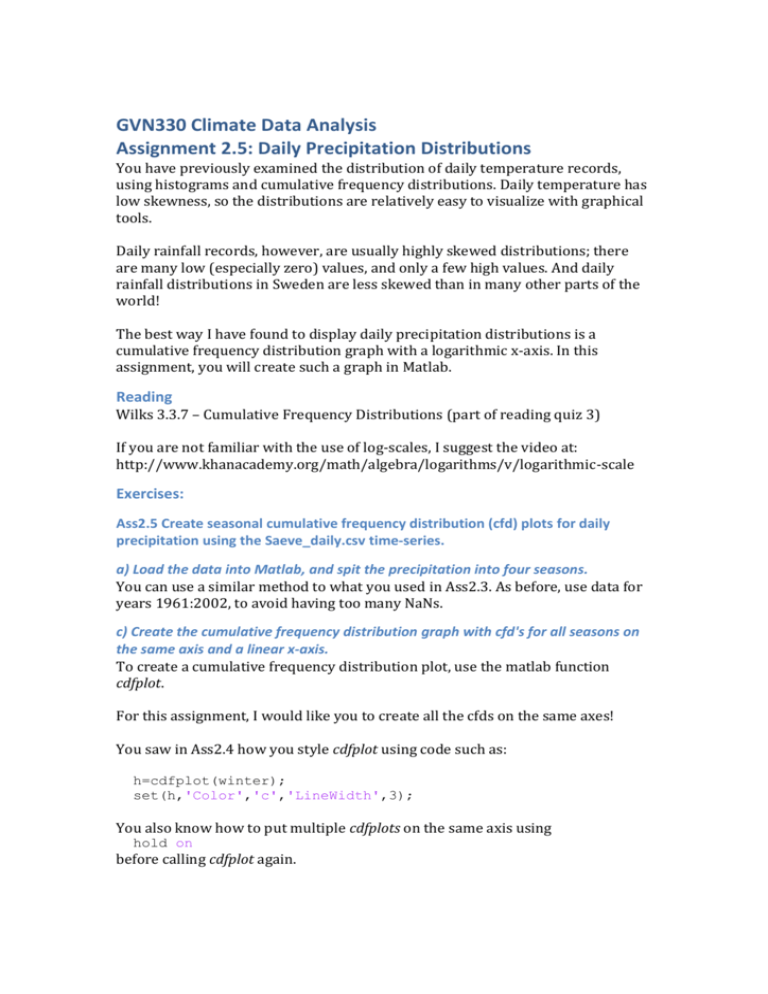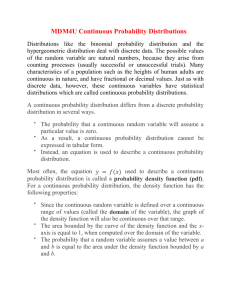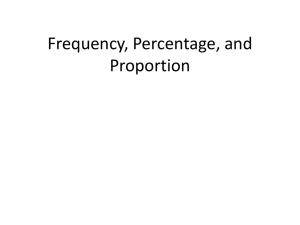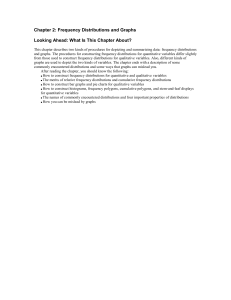You have previously examined the distribution of daily
advertisement

GVN330 Climate Data Analysis Assignment 2.5: Daily Precipitation Distributions You have previously examined the distribution of daily temperature records, using histograms and cumulative frequency distributions. Daily temperature has low skewness, so the distributions are relatively easy to visualize with graphical tools. Daily rainfall records, however, are usually highly skewed distributions; there are many low (especially zero) values, and only a few high values. And daily rainfall distributions in Sweden are less skewed than in many other parts of the world! The best way I have found to display daily precipitation distributions is a cumulative frequency distribution graph with a logarithmic x-axis. In this assignment, you will create such a graph in Matlab. Reading Wilks 3.3.7 – Cumulative Frequency Distributions (part of reading quiz 3) If you are not familiar with the use of log-scales, I suggest the video at: http://www.khanacademy.org/math/algebra/logarithms/v/logarithmic-scale Exercises: Ass2.5 Create seasonal cumulative frequency distribution (cfd) plots for daily precipitation using the Saeve_daily.csv time-series. a) Load the data into Matlab, and spit the precipitation into four seasons. You can use a similar method to what you used in Ass2.3. As before, use data for years 1961:2002, to avoid having too many NaNs. c) Create the cumulative frequency distribution graph with cfd's for all seasons on the same axis and a linear x-axis. To create a cumulative frequency distribution plot, use the matlab function cdfplot. For this assignment, I would like you to create all the cfds on the same axes! You saw in Ass2.4 how you style cdfplot using code such as: h=cdfplot(winter); set(h,'Color','c','LineWidth',3); You also know how to put multiple cdfplots on the same axis using hold on before calling cdfplot again. By default, cdfplot has a linear x-axis. Look at the result - it is very difficult to draw any conclusions about the differences in the precipitation distributions for each season! d) Change the x-axis to be a logarithmic scale You can change from log-scale to linear-scale using the command: set(gca,'Xscale','log') Discussion: Now you should be able to answer questions such as: Which two seasons have the highest fraction of dry days (days with 0mm rainfall)? Which is the driest season? Which is the wettest season? Is it true that summer has more dry days than winter, but also more days with heavy (>20mm) precipitation? Checkpoint – compare your answers with others!









